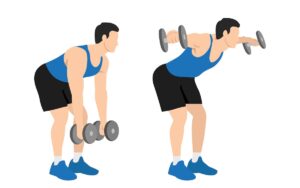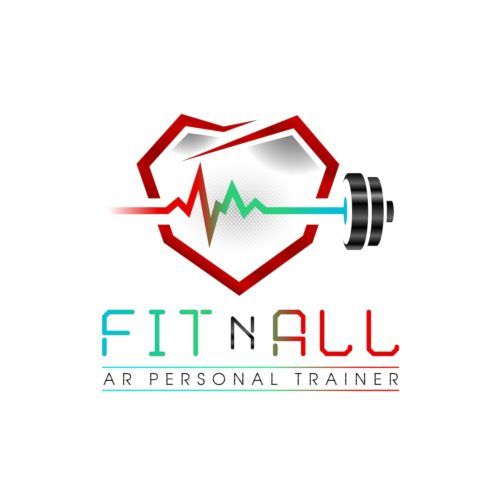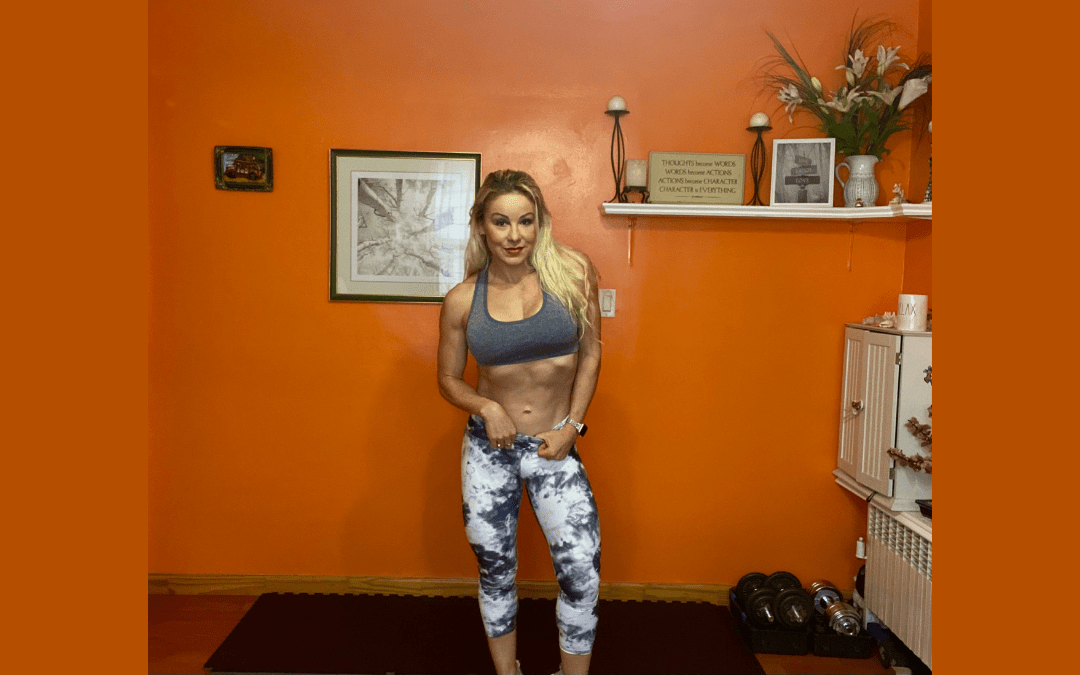Having defined and strong shoulders gives you a great presence. A wonderful exercise for the rear delts, the posterior part of the shoulders, is the bent-over rear delt fly. Read on to learn the muscles involved in bent-over rear delt fly, benefits and common mistakes associated with bent-over rear delt flyes, how to properly perform bent-over rear delt raises, exercise ideas for a shoulder workout, and watch the video on how to do bent-over reverse flyes.
What Muscles Do Bent-Over Rear Delt Flyes Work?
The shoulder has several muscles that attach to the scapula, humerus, and clavicle. The largest shoulder muscle is the deltoid, which consists of the anterior, middle, and posterior fibers. There are other muscles — the supraspinatus, infraspinatus, teres minor, and subscapularis — that form the rotator cuff and are vital in the dynamics of shoulder movement. Many people tend to work out the front and lateral deltoid muscles and neglect the rear delts.
Bent-over rear delt raises work the following muscles:
- Rear Delts: These muscles are the primary target of the exercise. They are responsible for shoulder extension and lateral (outward) shoulder rotation. This is a shoulder area that can get neglected and be among the weakest areas, creating muscle imbalances.
- Trapezius: The upper trapezius, extending over the back of the neck and shoulders, is involved in stabilizing the shoulder blades during the movement.
- Rhomboids: These muscles are located in the upper back in between the scapula. They help stabilize the shoulder blades and maintain proper posture during the exercise.
Other secondary muscles involved are:
- Erector Spinae: The erector spinae muscles are located along the spine, lying in the groove to the side of the vertebral column. They are involved in maintaining an erect posture, back and head extension, forward flexion of the thorax, flexion, and rotation of the vertebral column and head. During this movement, they are engaged in maintaining a stable and straight back position during the bent-over position.
- Latissimus Dorsi (Lats): The lats are the large muscles on either side of the mid to lower back which are also involved to some extent in providing stability during the movement.

Benefits of Bent-Over Rear Delt Flyes
- Aesthetics: Well-rounded shoulders look great and complement a well-balanced upper body, giving you a more confident look.
- Strength: Bent-over rear delt raises help to strengthen the posterior deltoids, which translates into a sturdy upper back.
- Shoulder Health: The shoulder area is one of the most mobile spheres in the body. The wide range of motion permits great rotation, abduction, and adduction. Simultaneously, this versatility makes the shoulder area more prone to injury. Working out the, often neglected, rear dels, helps you maintain shoulder mobility, and stability, and prevent injury. Additionally, they are safe for the shoulders and do not negatively affect the rotator cuffs.
- Hypertrophy: They help grow the posterior area of the shoulder, improving pulling and pushing abilities.
- Corrective: Bent-over rear delt flyes help correct imbalances. Those are created when overworking the pectorals and anterior deltoids.
- Better Posture: Working out the upper posterior chain muscles helps keep you more straight and avoid a “hunched forward” appearance.
- Engages Multiple Muscles: Besides working the rear deltoids, rhomboids, and trapezius primarily, standing bent-over rear lateral raises engage the lateral delts, abs, lower back, and even the glutes slightly to help you maintain proper alignment.
- Easy & Versatile: They are not complicated and do not need a lot of equipment. You can use just a pair of dumbbells, cables, or bands. You can, also, perform different variations, raising both arms simultaneously, one arm at a time, or alternating arms.
How to Perform Bent-Over Rear Delt Flyes

- Get a pair of dumbbells
- Stand with your feet shoulder-width apart, shoulders back, back straight, and your core tight
- Bend your knees slightly and bend over
- Let your arms hang underneath your shoulders and face the palms of your hands towards each other while keeping your arms slightly bent at the elbows
- Inhale. As you exhale, lift the dumbbells straight to the side until both arms are slightly higher than parallel to the floor
- Squeeze your shoulder blades together at the top and hold for a couple of seconds
- Keep your torso forward and stationary
- As you inhale, lower the dumbbells slowly back to the starting position
- Repeat
Bent-Over Rear Delt Flyes’ Mistakes
Now that you know how to perform bent-over rear delt flyes, here are some common mistakes to avoid:
- Rounding or Arching Your Lower Back: Avoid rounding or arching your back. Instead, keep your back straight, chest up, and engage your core to stabilize your torso and avoid overstressing or injuring your back.
- Using Too Much Weight: The rear deltoid is a small area and if you use weights that are too heavy, you can compromise your form. Start with a lightweight to ensure proper form and increase the weight gradually as your strength and form improve.
- Excessive Momentum: Avoid using momentum to lift the weights instead of relying on your rear delts. Use a controlled, deliberate motion rather than swinging the weights – focus on contracting at the top.
- Incorrect Elbow Position: Allowing the elbows to bend too much or too little can engage other muscles, such as your back or biceps, instead of your rear delts. Keep a slight bend in the elbows throughout the movement. This helps target these muscles while minimizing stress on the elbow joints.
- Not Squeezing at the Top: When you fail to squeeze the shoulder blades together at the top of the movement, you fail to fully engage the rear deltoids. Focus on squeezing your shoulder blades together at the peak of the lift.
- Poor Neck Alignment: Craning the neck or looking up during the exercise can strain your neck. Keep your neck in a neutral position and align your head with your spine.
- Using Short Range of Motion: Lifting your arms halfway up but not slightly higher than parallel to the ground does not allow you to utilize a full range of motion for this exercise. You also miss completing a full contraction.
Bent-Over Rear Delt Flyes Video Tutorial
Rear Delt Workout
You can alternate your rear delt workout by performing Face Pulls as well as seated bent-over rear delt raises.
You can also target other shoulder areas by performing:
Bent-over rear delt flyes are a great exercise for targeting the rear deltoids, which are often underdeveloped in comparison to the front and side delts. However, it’s important to perform this exercise with proper form to maximize effectiveness and gain all the benefits associated with this exercise. By avoiding the most common mistakes, you can get a powerful shoulder workout.
Lift, Burn more Fat, Get Stronger, and Live Healthier!
To a Fitter Healthier You,
The Fitness Wellness Mentor



